
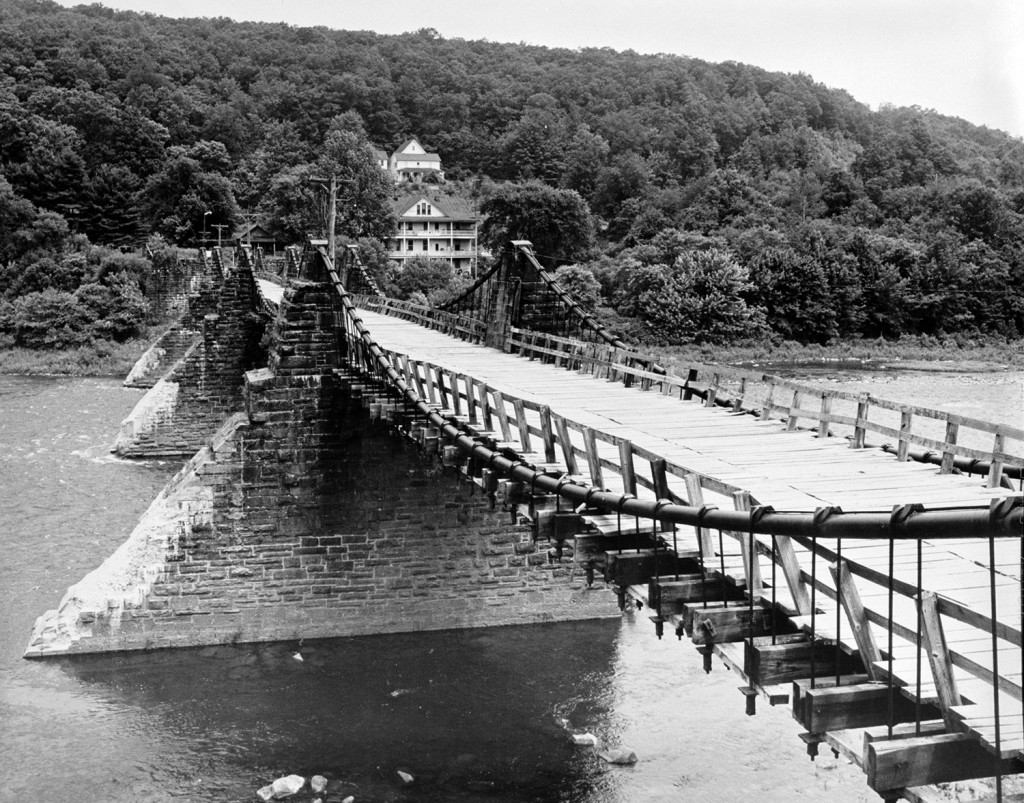

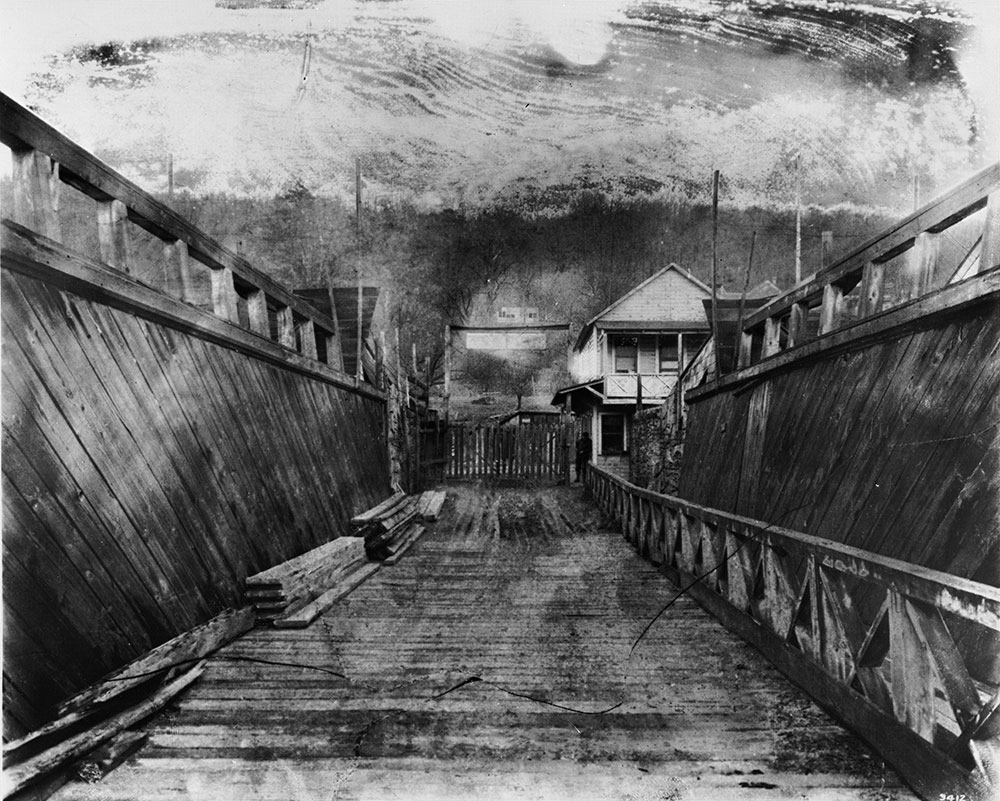
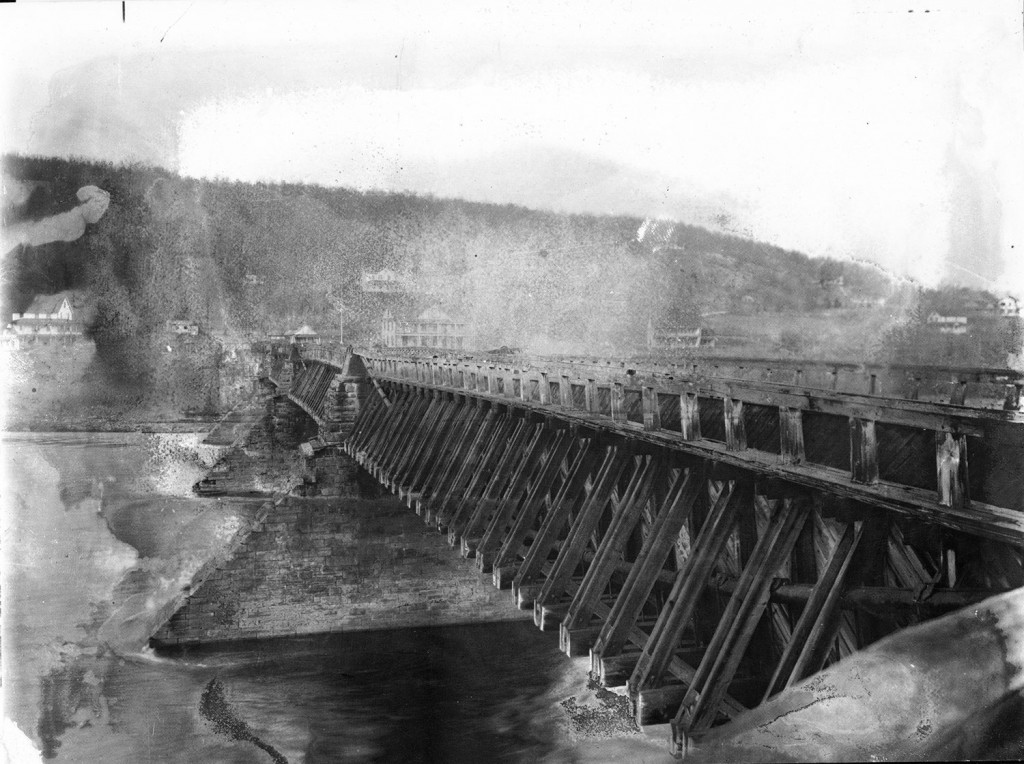
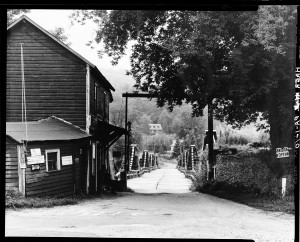
The Library of Congress (LOC) has many photos of the Roebling Aqueduct turned Bridge. I am fascinated with Roebling’s Aqueduct, obviously, and have collected a few more photos from LOC for this and another post. Unfortunately there are no dates as to when the photos were taken. By clicking on the photo you can see it much larger.
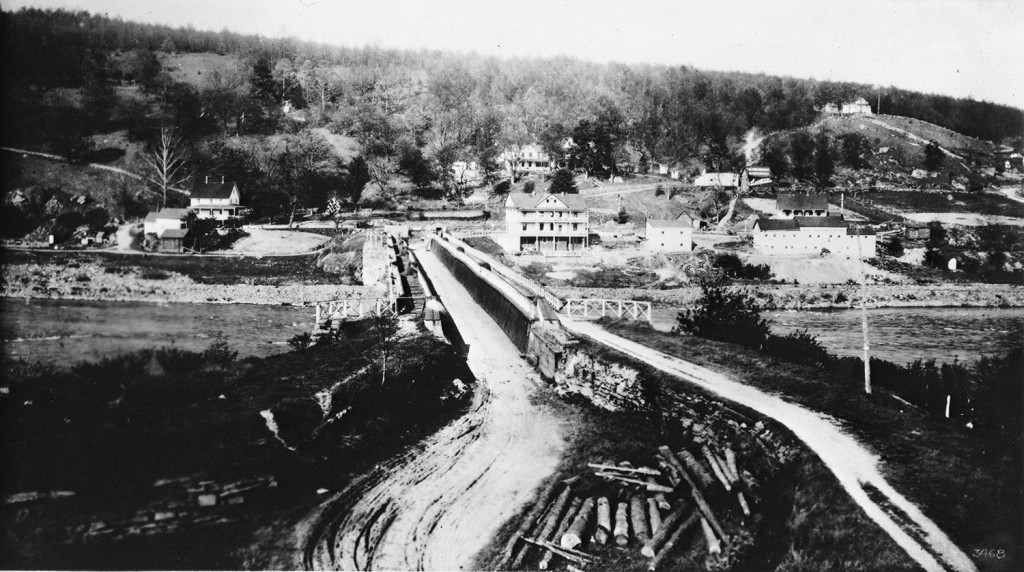
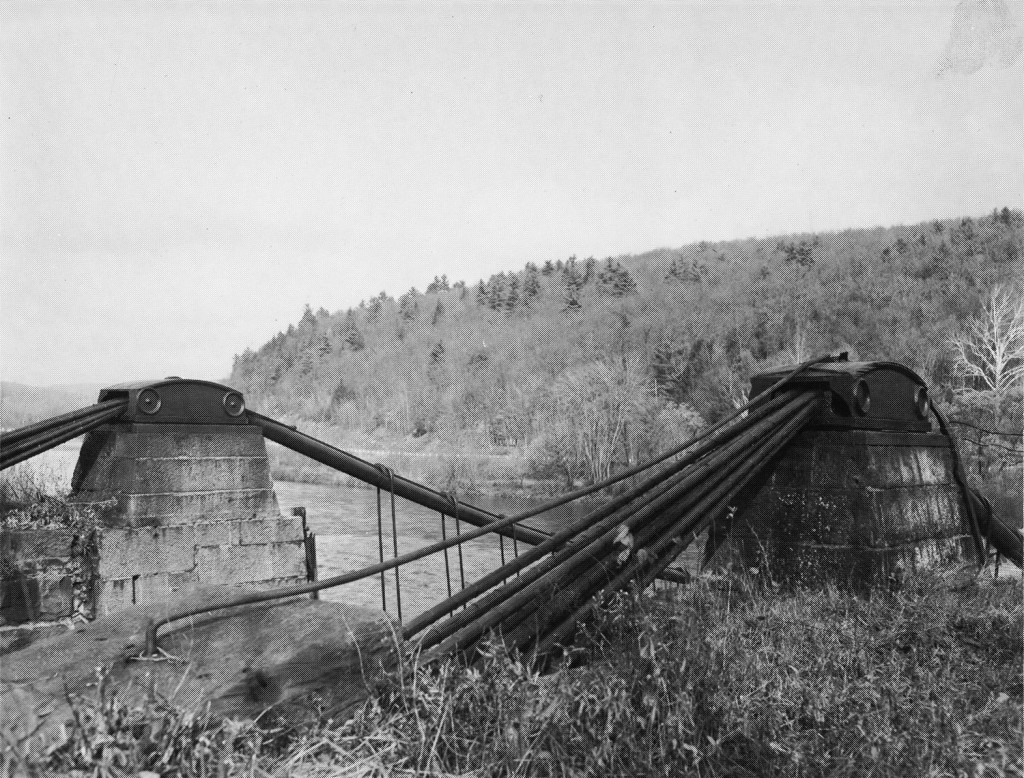
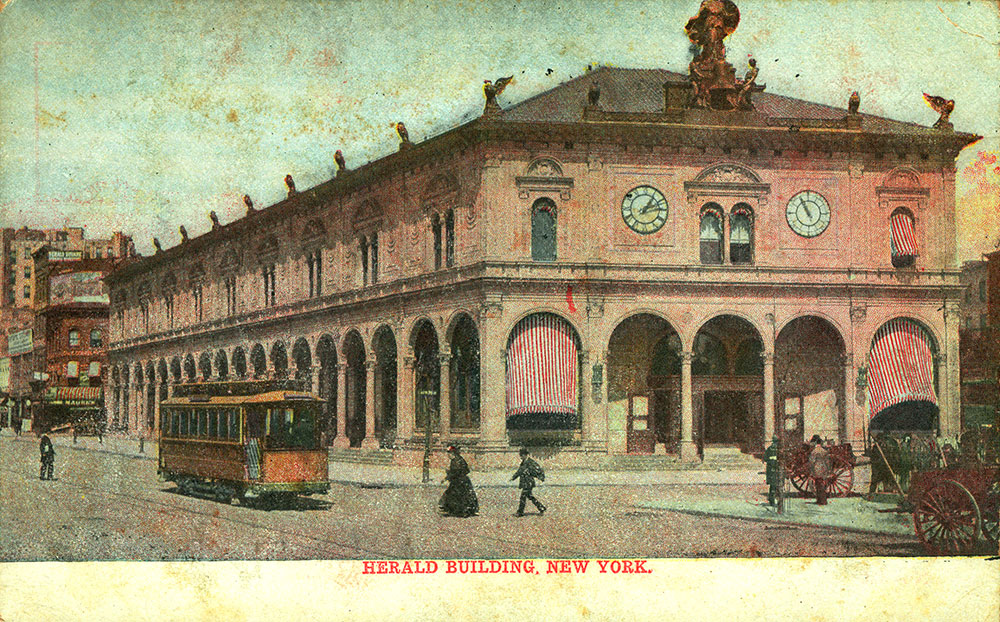
I wrote about the Herald building in a 2012 post.
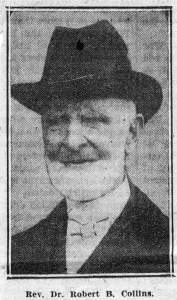
The Austin family met their neighbors the Collins family, at least by 1860. The family was from Ireland and listed as James, 58, a farmer, his wife Isabella, 56, Mary Jane, 25, Robert B., 20. Children Tom and Annie Collins were not listed.
Others were listed as being born in New York: Maria 28, school teacher, Emma, 8, William, 5. The family lived on what is Collins road today.
Thomas Collins died in 1920. Robert Collins, who left Eldred in the Spring of 1862, often corresponded with Mort and Jennie Austin.
In Robert’s letter of 1927 to Mort Austin, he was living with his daughter Bertha Coe.
Robert wrote Mort again in December 25, 1928:
…We were interested in the old Place, and often think of it as our early home and of the acquaintances we made there and loved. Is the old farm still in the possession of Mrs. Collins [Emma Kelso, Tom’s widow]? If it has changed hands, who is the owner?
That dear old spot has to me many blessed memories. My dear old father, mother, brother, and sisters lived for many years there, and it was from the front door of the old house that my daar mother kissed me good bye when I left home in 1862 to enter the Christian ministry.
How are you all? I have not been in Eldred for two years. I have not been well since last July, when I reached my 88th birthday. Still I am not confined to the bed all the time; simply getting old.
I shall be greatly pleased if you can tell me how the old place is and how its folks are. It is a dear spot to my heart, full of delightful memories, not only of the place itself, but of the people whom I knew and loved and still remember.
With best wishes for your happiness. I am yours,
R.B.Collins
Robert Collins died in 1931. His obituary was in the Austin family collection. To read the obituary of Robert Collins: Continue reading

The February 1938 Sunday Mirror Magazine section mentioned that after Katie Stege’s death, when her personal property was sold at auction, in addition to her 35 Persian cats, there were 48 rabbits, 17 ducks, 4 goats, 22 pigs, 19 sheep, 4 lambs, 99 chickens, 4 bulls, 5 cows, a horse and countless pheasants and wild turkeys roaming the place.

Does this look familiar to any of my Halfway Brook readers?
Austin Smith, the Highland Historian, mentioned it as the mill on the route from Barryville to Eldred. I find it curious that it is called the Holloway Sawmill when I have not seen that surname in Eldred in my research.
I wonder if somehow Halfway Brook morphed to Holloway in the postcard caption.
In random connections: my youngest’s wife’s maiden name is Holloway; and my husband’s baby photo (taken at a Studio in CA, 2,500 miles from my birthplace in western NY) has Austin printed on the lower right corner.
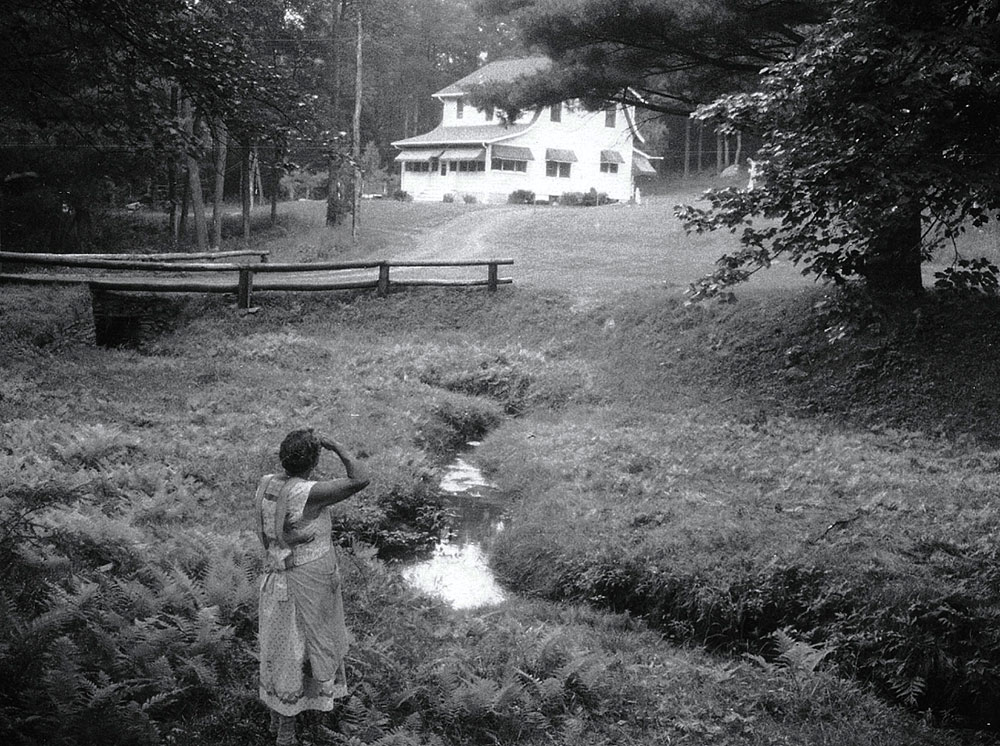
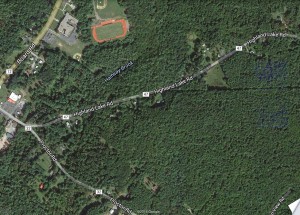
I did not know about the Bellom family when I wrote “Farewell to Eldred.” A special thank you to J. Meyer for sharing his 1959 Bellom Property photo and the following information:
It is my understanding that Bertha and Joe Bellom bought the property in the 1930s as a summer home. It was a very large tract running quite a distance up toward the lake. They had three kids: Joe, Irene and Madeline. When Bertha died after Joe, their son took over. They were originally from Jersey.
Joe Sr. kept a ’30s car in the garage in Eldred for summer use and I recall riding in it as a kid. The woman in the foreground in my maternal grandmother, Caroline Franke, who bought the property across the road. She and Bertha were friends.
So, that is how my mom got to Eldred from Queens, NYC. My grandmother rented a summer place up the road from the Clouse family after my maternal grandfather died in the early ’30s, and that’s where my mother met my father.
The Bellom property is in the far top right corner. The driveway is just above the “d” in “Rd,” which puts it just after that sharp bend.—J. Meyer.
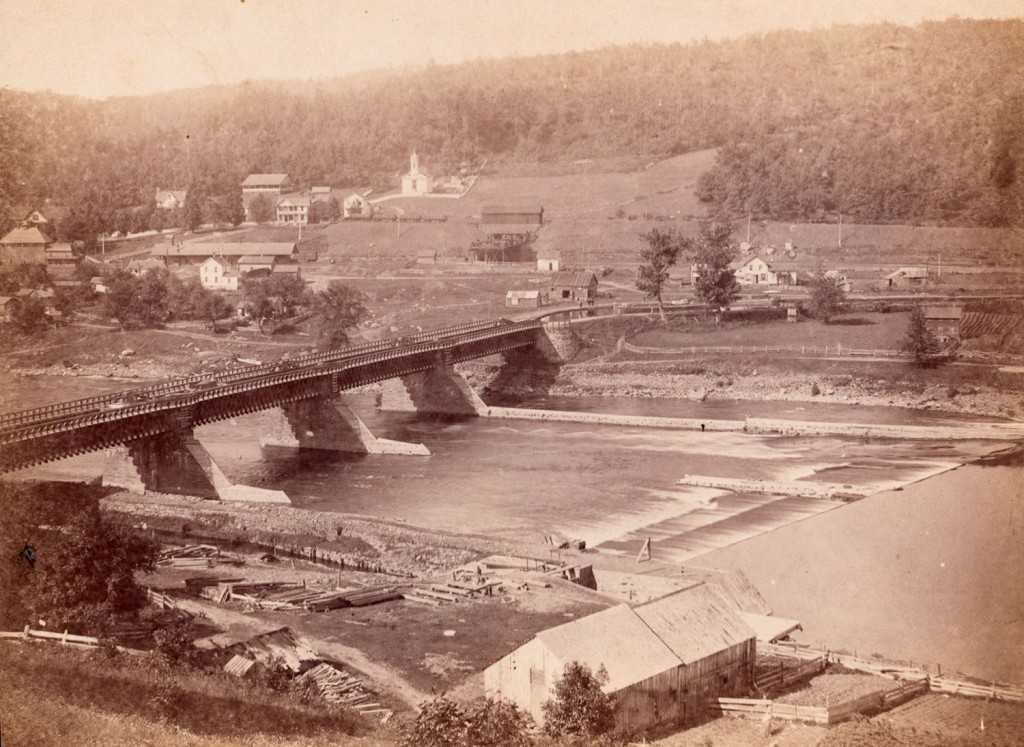
This photo shows the Roebling Aqueduct as well as the slack water dam. The slackwater dam (to the right of the Aqueduct in this photo) caused a 1-1/4 mile calm section in the river. The photo was taken around 1880 from the New York side of the Delaware River.
Slackwater Dam
A six-foot high slackwater dam existed below the confluence or juncture of the Lackawaxen and Delaware Rivers before the Roebling Aqueduct was built in 1847. The dam, which caused a calm section over a mile long, was raised to 16 feet after the Aqueduct was completed. The extra height was helpful for the canal, but treacherous for the lumber rafters.
When a raft went over the dam, the bow oarsmen disappeared from the stern oarsmen under a swirl of white water. Many rafts of lumber were lost on this section of the river, and the Delaware and Hudson paid the damages.
In an attempt to aid raftsmen, the D&H provided guides to lead rafts through this dangerous section, but this was not done without a payment to the canal company.
—Osterberg, Matthew, The Delaware and Hudson Canal and the
Gravity Railroad, p. 53.
Once over the Aqueduct, canal boats made a sharp right at Minisink Ford, New York, and went through Locks 72, 71, and 70 (some of the lock numbers have been changed). There were 16 locks before they reached Port Jervis.
I found several more old Roebling Bridge photos, but I’ll save them for a later time.